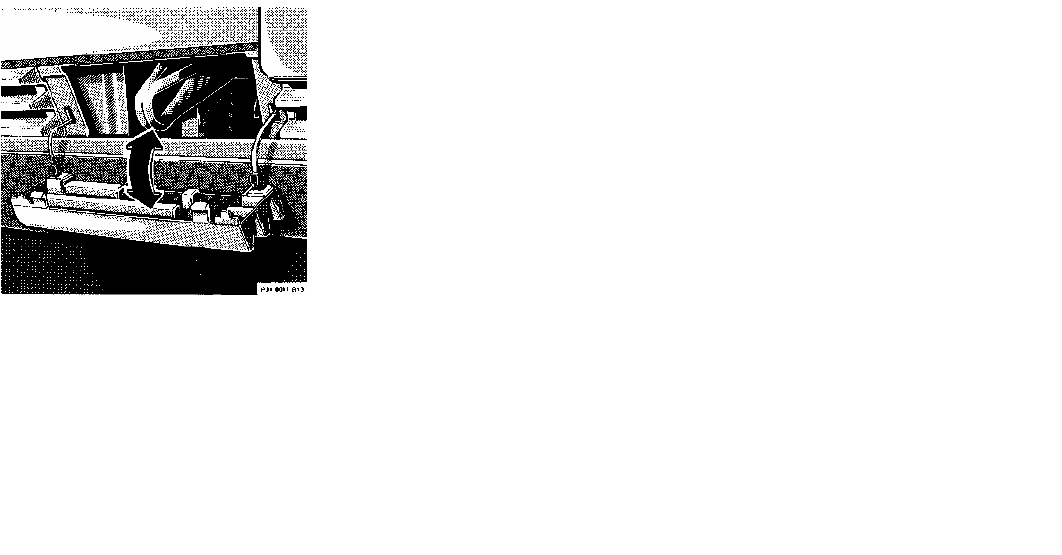
123
Towing the Vehicle
The rear towing eye is located at the
right, below the bumper. The front
towing eye is located on the passenger
side behind a flap in the bumper panel.
Flap removal: Insert finger in recess of
flap and pull flap out.
Flap installation: Engage flap at bottom
and press in top securely.
Caution!
If the vehicle is towed with the front
axle raised, the engine must be shut off.
Otherwise, the ASR or ESP will
immediately be engaged and will apply
the rear wheel brakes.
Warning!
With the engine not running, there is
no power assistance for the braking
and steering systems. In this case, it is
important to keep in mind that a
considerably higher degree of effort
is
necessary to brakes and steer the
vehicle.
We recommend that the vehicle be
transported using flat bed equipment.
This method is preferable to other types
of towing.
The vehicle may be towed with all
wheels on the ground and the selector
lever in position "N" for distances up to
30 miles (50 km) and at a speed not to
exceed 30 mph (50 km/h). The key must
be in steering lock position 2.
To positively avoid a possibility of
damage to the transmission, however,
we recommend to disconnect the drive
shaft at the rear axle drive flange on
any towing beyond a short tow to a
nearby garage.
Do not tow with sling-type equipment.
Towing with sling-type equipment
over bumpy roads will damage radiator
and supports.
Use wheel lift, dolly, or flat bed
equipment, with key in steering
lock turned to position 0.
Note:
To signal turns while being towed with
hazard warning flasher in use, turn key
in steering lock to position 2 and
activate combination switch for left or
right turn signal in usual manner - only
the selected turn signal will operate.
Upon canceling the turn signal, the
hazard flasher will operate again.


















